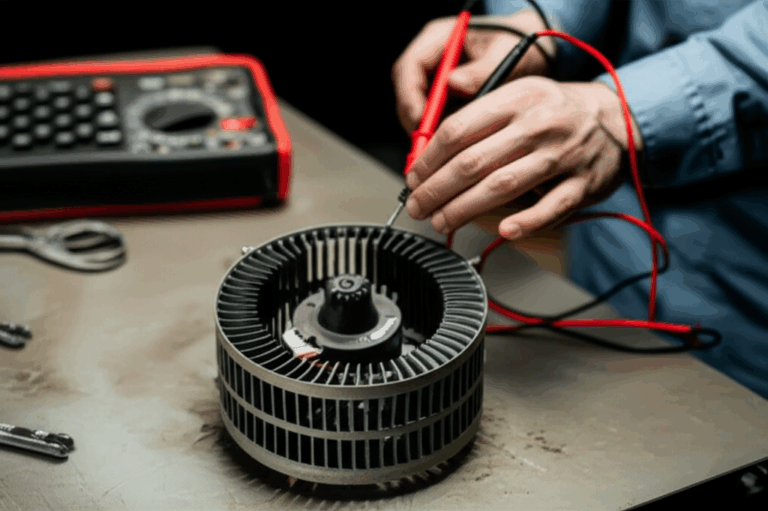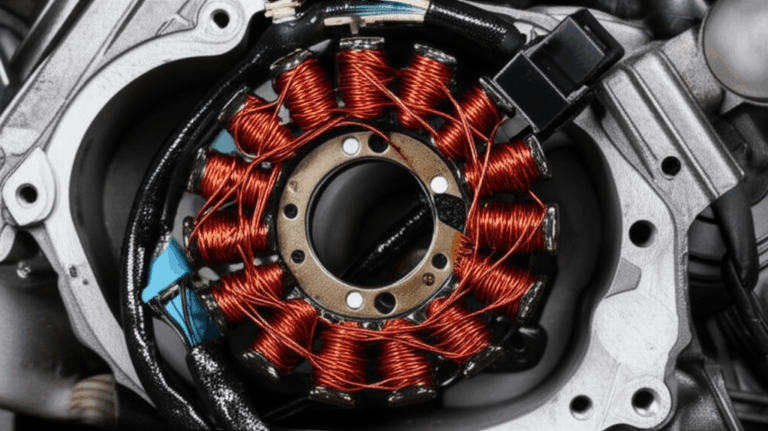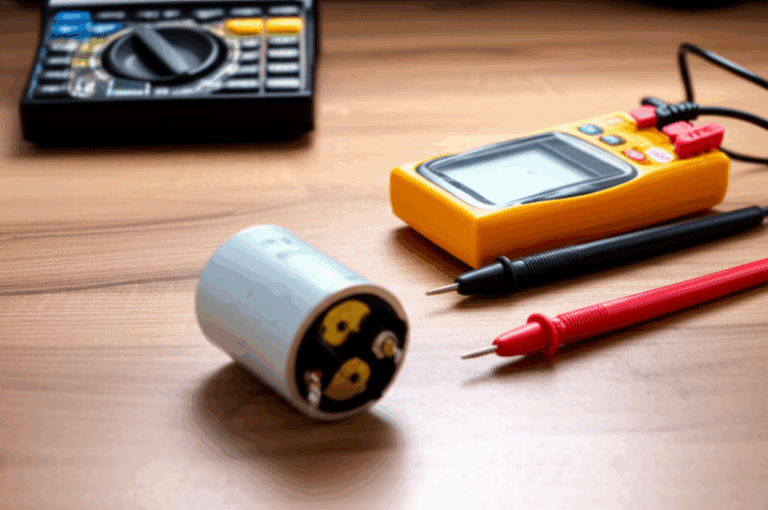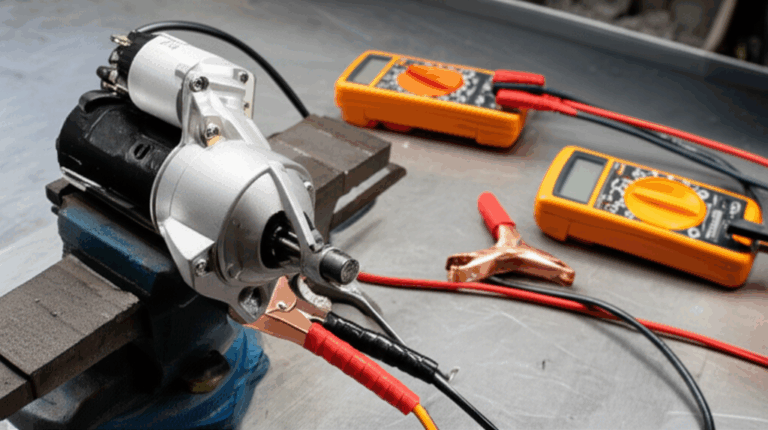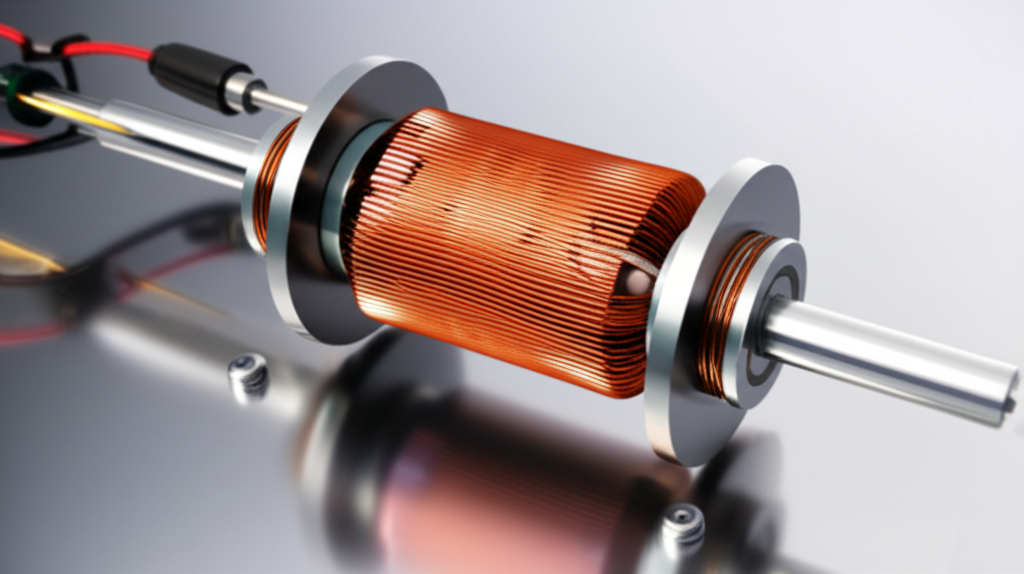
How Does an Electromagnetic Motor Work?
Table of Contents
- How Does an Electromagnetic Motor Work?
- Why should you care about motors?
- What is electromagnetism
- How do stator and rotor make motion
- What do commutator and brushes do in DC motors
- How do AC motors spin without brushes
- Step by step: from electric power to turning torque
- What types of motors will you meet
- How do we control motor speed and torque
- What drives efficiency, cooling, and lifespan
- Fast facts and numbers you can trust
- Where do we use electric motors every day
- Motor vs generator: what is the difference
- Better cores, better motors: materials that matter
- Simple troubleshooting and safety tips
- Key terms and units at a glance
- Conclusion
- FAQs
- Summary: what to remember
- References
Electric motors turn electricity into motion. In this simple guide I show you how they do it. You will see the parts inside. You will see the science that makes the shaft spin. You will learn enough to pick the right motor and to spot problems fast.
I write this in plain English for busy people. You may be a student or a maker or a manager. You want clear steps not fluff. Read on and take the mystery out of every fan and pump you see.
Why should you care about motors?
Here is the Problem. Motors sit in your home and your car and your plant. They use a lot of power. You pay for that power every month. If you do not know how a motor works you can pick the wrong one. You can waste energy. You can face downtime and stress.
Now the Agitate. Motors use almost half of the world’s electricity. A small drop in waste saves big money. A poor motor design runs hot and noisy. It fails early and stops your line. That hurts your wallet and your day.
Here is the Solution. Learn the motor basics today. Use this guide to see how stators and rotors make torque. See how DC and AC motors differ. See how better laminations and windings cut losses. Then you can choose well. You can run safe. You can save energy with confidence.
What is electromagnetism
Electromagnetism links electricity and magnetism. A wire with electric current makes a magnetic field. This idea goes back to Oersted who saw a compass move when a current flowed. That simple spark lit a new age.
Two laws show what happens inside a motor. Faraday’s Law of Induction says a change in magnetic flux makes electromotive force (EMF). Lenz’s law says the induced current fights the change that caused it. The Lorentz force says a current in a magnetic field feels a force at right angles. Push on a loop and it turns. That is your motor in one line.
I like a clear rule for direction. Use Fleming’s Left-Hand Rule for motors. First finger for field. Second finger for current. Thumb for force. Sounds simple because it is.
How do stator and rotor make motion
Think of two main parts. The stator stays still. The rotor turns. The stator builds the main field. The rotor carries current and feels force. Together they make torque on the output shaft.
Inside the stator you see field windings or permanent magnets. The windings sit in slots cut into steel. These steel stacks use thin sheets called laminations. They guide the magnetic field lines and cut eddy currents. The rotor sits inside the stator with a small air gap. The gap matters. Too big and you lose magnetic flux density. Too small and parts can rub.
When current flows in the armature windings on the rotor it creates poles. North and south poles pull and push against the stator poles. This pull makes mechanical rotation. That is electrical to mechanical energy in action.
What do commutator and brushes do in DC motors
In a DC motor, the current must flip in the rotor at just the right time. The commutator does this. It is a split ring on the rotor. Brushes press on it and feed current in. As the rotor turns the commutator reverses current in each coil. The torque then keeps the same direction. The motor keeps turning.
The armature is the loop or coil that carries current in the rotor. The commutator connects each armature coil to the DC source in the right order. Brushes must stay clean. Bad brushes make motor noise and heat. You can fix brush wear with simple care. That is part of good motor maintenance.
DC motors start with high torque. They work well with H-Bridge circuits and pulse width modulation (PWM) control. Makers love DC motors because they feel simple and strong.
How do AC motors spin without brushes
In an AC motor, we skip brushes. We feed AC to the stator coils. This makes a rotating magnetic field that sweeps around. The rotor tries to catch up.
In an induction motor, the changing stator field cuts the rotor bars. That change induces current in the rotor by mutual induction and self-induction. The rotor current makes its own field. The two fields lock and produce torque. The rotor lags a bit. We call that slip. These motors are tough and common.
In a synchronous motor, the rotor locks in step with the stator field. It can use permanent magnets or field windings on the rotor. Many electric vehicle makers use permanent magnet synchronous motors (PMSM) for high efficiency and tight control. Brushless DC motors (BLDC) also use electronic switching to act like DC without brushes.
Step by step: from electric power to turning torque
You connect the power supply to the motor. It can be DC from a battery or AC from the electrical grid.
Current runs through winding coils in the stator or rotor. These coils make fields. The fields pull and push each other.
The Lorentz force acts on the current in the rotor. The rotor feels a twist. That torque starts the spin.
- In DC motors the commutator and brushes flip current at the right time. The torque keeps the same direction.
- In AC motors the alternating current makes a rotating field. The rotor follows that moving field.
The shaft turns. You get kinetic energy out. You can drive a pump, a fan, a compressor, or a washing machine drum.
What types of motors will you meet
You will see many kinds of motors. Here are the big ones.
- DC Motors
- Brushed DC: simple control and strong start.
- Brushless DC Motor (BLDC): no brushes and less wear. Great for drones and robotics.
- AC Motors
- Induction Motor: rugged and cheap. It handles most industrial jobs.
- Synchronous Motor: steady speed and high power factor with power factor correction where needed. Great for precise lines.
- Stepper Motor
A stepper motor moves in small steps. You send pulses and it moves a fixed angle each time. It is slow but precise. It holds position well without feedback.
I also like to note the generator which does the reverse job. A motor turns power into motion. A generator turns motion into power. Same family. Different direction.
How do we control motor speed and torque
You can change speed and torque with smart control.
- Variable frequency drive (VFD)
A VFD feeds AC motors with a new frequency. Lower freq means lower speed. Higher freq means higher speed. VFDs also shape the voltage to save energy.
- PWM control
Pulse width modulation (PWM) chops DC into fast on and off pulses. You change the duty cycle to change average voltage. You can use PWM with DC motors and BLDC motors.
- H-Bridge
An H-Bridge lets you flip current in a DC motor. You can go forward and reverse. You can brake too with dynamic braking or even feed power back with regenerative braking.
- Torque-speed curve analysis
Each motor has a torque-speed curve. It shows how torque falls as speed rises. Match the curve to your motor load characteristics. Your line runs smooth when the match is right.
What drives efficiency, cooling, and lifespan
Motors lose power in many ways. You see hysteresis and eddy currents in the iron. You see resistance losses in motor windings. You see windage and friction in bearings and housing. Good design cuts these types of motor losses.
- Back electromotive force (EMF)
As the rotor turns it makes back EMF that fights the input. This keeps current in check. It also sets motor speed control limits.
- Cooling systems
Fans and fins move heat away. Better motor cooling systems and clean air paths help the motor lifespan. Watch the insulation classes. Heat kills insulation first.
- Power factor correction
In AC motors you can raise power factor with caps or the right drive. Less reactive power means less waste.
- Motor maintenance
Grease bearings on time. Keep dust off. Check motor power consumption. Listen for new motor noise. Small fixes stop big fails.
Fast facts and numbers you can trust
Here are some key facts that guide smart picks and smart use.
| Category | Metric / Data Point | Context & Significance |
|---|---|---|
| Global Market Size | About 140 billion USD in 2022 | Demand grows with industrial systems and electric vehicles |
| Energy Consumption | About 45–50% of global electricity | Motors are the largest single user of power |
| Efficiency Gains | 2–3% improvement from IE1 to IE3 | A small gain saves large energy over time |
| EV Motor Efficiency | About 70–90% | Much higher than internal combustion engines |
| Motor Lifespan | 15–20 years with care | Good bearings, insulation, and cooling last longer |
| Dominant Motor Types | AC induction motors at about 80–90% in industry | Rugged and cost effective |
| Historical Milestone | 1837: Davenport’s DC motor patent | Practical motors moved from lab to shop |
| Miniaturization | Motors at micrometer scale | Used in MEMS and medical tools |
These numbers make a case. Small design wins add up. You save energy and money when you pick and run motors well.
Where do we use electric motors every day
Look around. You will spot motors everywhere. Your fan spins. Your washing machine runs a cycle. The pump in your home moves water. The compressor in your fridge hums. Your electric vehicle glides with a quiet motor inside.
In plants you see motors on lines and lifts. Industrial motor applications include mixers and conveyors. You see them in HVAC units and cranes. Household appliance motors and factory motors all use the same core rules.
Robots use robotics motor control for smooth motion. Drones use BLDC motors for speed and light weight. Smart drives use control systems like PWM and VFDs. It is all one family of tech. Different jobs. Same heart.
Motor vs generator: what is the difference
This is a common FAQ. A motor takes electrical energy and makes mechanical energy. A generator does the reverse. Spin the shaft in a field and you get voltage and current out. Both use Faraday’s Law. Both use coils and iron. Flip the energy flow and the name changes.
A transformer is a cousin. It does not spin. It uses mutual induction in two windings on a transformer core. It changes Volt levels at the same frequency. No moving parts. Different job.
Better cores, better motors: materials that matter
Here is where good parts shine. The motor magnetic circuit runs through steel. Steel must guide flux well and waste little energy. Thin laminations cut eddy currents and hysteresis. Good stacks stay cool and quiet.
- If you design a stator start with quality stator core lamination. Tight stacks and clean slots raise magnetic flux density and cut loss.
- Your rotor needs strength and clean slots too. See robust rotor core lamination for smooth torque and low noise.
- For full projects look at matched motor core laminations that fit your frame and air gap needs.
- Ask about the base metal as well. High grade electrical steel laminations lower core loss and boost efficiency.
Why push this now. Because materials set your ceiling. Better cores give you higher efficiency, less heat, and longer life. That is the Solution to the pain of waste and downtime.
Simple troubleshooting and safety tips
- No start
Check the power supply, fuses, and leads first. Look at the motor circuit diagram if you have one.
- Low torque
Check voltage drop and resistance in windings. Check load and torque-speed curve match.
- Overheat
Clean vents and fans. Check cooling systems. Measure current and power factor.
- Noise or vibration
Check bearings and balance. Check the air gap for rub.
Safety first. Lock out power. Use insulated tools. Follow motor safety precautions. Do not touch live parts. Do not block fans.
Key terms and units at a glance
The list below shows key ideas you saw above. I keep each note short and clear.
| Term or Entity | Plain Meaning |
|---|---|
| Electric motor working principle | How a motor turns power into motion |
| Electromagnetism basics | Link between current and magnets |
| Magnetic field generation | Fields form around coils and magnets |
| Electric current interaction | Current and field push on each other |
| Rotor movement explanation | Why the moving part turns |
| Stator function motor | What the still part does |
| Armature construction | How the rotor coils are built |
| Commutator purpose | Switches current in DC motors |
| Brushes motor role | Feed power to the commutator |
| Permanent magnets in motors | Fixed magnets that make fields |
| Electromagnetic induction | Changing flux makes voltage |
| Faraday’s law motor | The rule for induction |
| Lorentz force principle | Force on a current in a field |
| DC motor operation | How DC motors spin |
| AC motor differences | How AC motors differ from DC |
| Induction motor explanation | Rotor current induced by stator |
| Synchronous motor working | Rotor locks to the stator field |
| Stepper motor mechanics | Moves in steps for precise control |
| Brushless motor advantages | No brushes and less wear |
| Motor components detailed | Main parts inside a motor |
| How motors convert energy | From electrical to mechanical |
| Electrical to mechanical energy | Energy conversion in action |
| Magnetic poles attraction | North and south pull and push |
| Magnetic flux density | How strong the field is |
| Motor power source | Where power comes from |
| Winding coils function | Coils make fields and torque |
| Torque generation motor | Twist that makes shafts turn |
| Mechanical rotation principle | Why things spin |
| Motor efficiency factors | What makes motors waste less |
| Applications of electric motors | Where motors work |
| Historical development of motors | How motors grew over time |
| Types of electric motors | DC, AC, stepper, BLDC |
| Generator vs electric motor | Reverse ways to swap energy |
| Electromagnetism for beginners | Simple start to the topic |
| Energy conversion in motors | Input vs output power |
| Motor design considerations | What to choose and why |
| Magnetic force explained | How fields push and pull |
| Electric field in motors | Field from charges and voltage |
| Current direction motor effect | Direction sets force direction |
| Rotating magnetic field | AC trick that makes spin |
| Power supply to motor | AC mains or battery |
| Output shaft rotation | The part that does the work |
| Kinetic energy motor | Motion energy from the shaft |
| Electrical engineering motors | Field of study for motors |
| Physics of electric motors | Science that explains motors |
| Motor construction materials | Steel, copper, insulation |
| Industrial motor applications | Factory and plant jobs |
| Household appliance motors | Home devices that use motors |
| Electric vehicle motors | EV drive units |
| Robotics motor control | Motion for robots |
| Motor speed control methods | VFD and PWM |
| Variable frequency drive (VFD) | Drive that changes AC frequency |
| Motor maintenance tips | How to care for a motor |
| Troubleshooting motor issues | How to find and fix faults |
| Motor advantages disadvantages | Pros and cons to weigh |
| Future of electric motors | Trends for the next years |
| Sustainable motor technology | Green and efficient designs |
| Energy savings with motors | How to cut power use |
| Magnet wire specifications | Wire size and insulation info |
| Bearings in electric motors | Parts that let shafts spin |
| Motor housing function | Shell that protects parts |
| Air gap in motors | Space between rotor and stator |
| Back electromotive force (EMF) | Voltage made by moving coils |
| Voltage current motor | Key inputs for power |
| Resistance motor windings | Causes heat in coils |
| Ohm’s law motor application | V = I × R in motor circuits |
| Lenz’s law motor effect | Induced current fights change |
| Mutual induction motor | One coil induces current in another |
| Self-induction motor | A coil induces itself |
| Core material motor performance | Steel choice shapes losses |
| Magnetic saturation motor | When steel cannot carry more flux |
| Hysteresis motor losses | Iron loss from lagging magnetism |
| Eddy currents motor | Loops in iron that waste power |
| Efficiency calculation motors | Output power over input power |
| Power factor correction motor | Reduce reactive power in AC |
| Torque-speed curve analysis | Match motor to load needs |
| Motor load characteristics | How torque changes with speed |
| Mechanical power output motor | Work at the shaft |
| Electrical power input motor | Power from the source |
| Motor control systems | Electronics that manage motors |
| Pulse width modulation (PWM) motors | Speed control with fast pulses |
| Motor magnetic circuit | Flux path through iron |
| Magnetic field lines | Lines that show field shape |
| Motor magnetic materials | Steels and magnets used |
| Rotor inertia | How hard it is to change speed |
| Stator laminations | Thin sheets that cut losses |
| Field windings | Coils that make the main field |
| Armature windings | Coils on the rotor |
| Electromagnetic force | Force caused by fields and current |
| Motor circuit diagram | Map that shows connections |
| Motor power consumption | How much power it uses |
| Motor noise reduction | Ways to make it quiet |
| Motor cooling systems | Fans and fins that move heat |
| Types of motor losses | Copper, iron, and friction losses |
| Motor safety precautions | Steps to avoid shocks and burns |
| Motor starting methods | Direct start, soft start, VFD |
| Dynamic braking motor | Dump energy to slow down |
| Regenerative braking motor | Feed energy back to the source |
| Motor insulation classes | Heat grades for safe use |
| Motor lifespan factors | Heat, load, dirt, and care |
Units and names also matter.
- Ampere (unit) measures current
- Volt (unit) measures voltage
- Watt (unit) measures power
- Newton-meter (unit) measures torque
- Electromotive Force (EMF) is voltage from induction
- People to know: Michael Faraday, Nikola Tesla
- Parts to know: Stator, Rotor, Armature, Commutator, Brushes, Permanent Magnet, Coil, Winding
- Systems to know: Transformer, Power Supply, Electrical Grid, Control System, Pulse-Width Modulation (PWM), H-Bridge
Conclusion
I asked you to care about motors because motors touch your life. We saw the Problem of waste and downtime. We felt the Agitate in high bills and hot, noisy machines. We found the Solution in sound design and smart parts. You now know how electromagnetism drives motion. You can tell what the stator and rotor do. You can tell DC from AC. You can pick the right control like VFD or PWM. You can choose better cores and better laminations so your motor runs cool and strong.
If you design or buy motors you now have the tools. Use them. Save energy. Cut noise. Extend life. That is power you can feel.
FAQs
- What is the main difference between an electric motor and a generator
A motor uses electrical power to make mechanical power. A generator uses mechanical power to make electrical power.
- Can all electromagnetic motors operate without brushes
No. Brushed DC motors need brushes. BLDC and AC motors run without brushes because they use drives and rotating fields.
- How is the speed of an electric motor controlled
Use a variable frequency drive for AC motors. Use PWM and voltage control for DC motors.
- Why are electromagnetic motors so vital in modern technology
They are efficient and reliable. They power most of our tools and machines. They turn clean electric power into useful work.
Summary: what to remember
- Motors turn electricity into motion with Lorentz force and Faraday’s law
- The stator makes the field and the rotor turns in that field
- DC motors use commutator and brushes. AC motors use a rotating magnetic field
- Match the torque-speed curve to your load
- Use VFD or PWM for smooth control
- Better electrical steel laminations and tight stator and rotor stacks cut losses
- Keep things cool and clean for long lifespan and high efficiency
References
- IEA. Energy Efficiency 2022. Electric motor systems overview.
- Hughes, E. Electrical and Electronic Technology. Pearson.
- Fitzgerald, A., Kingsley, C., and Umans, S. Electric Machinery. McGraw Hill.
- NEMA MG 1. Motors and Generators Standard.
- IEEE Std 112. Standard Test Procedure for Polyphase Induction Motors and Generators.

